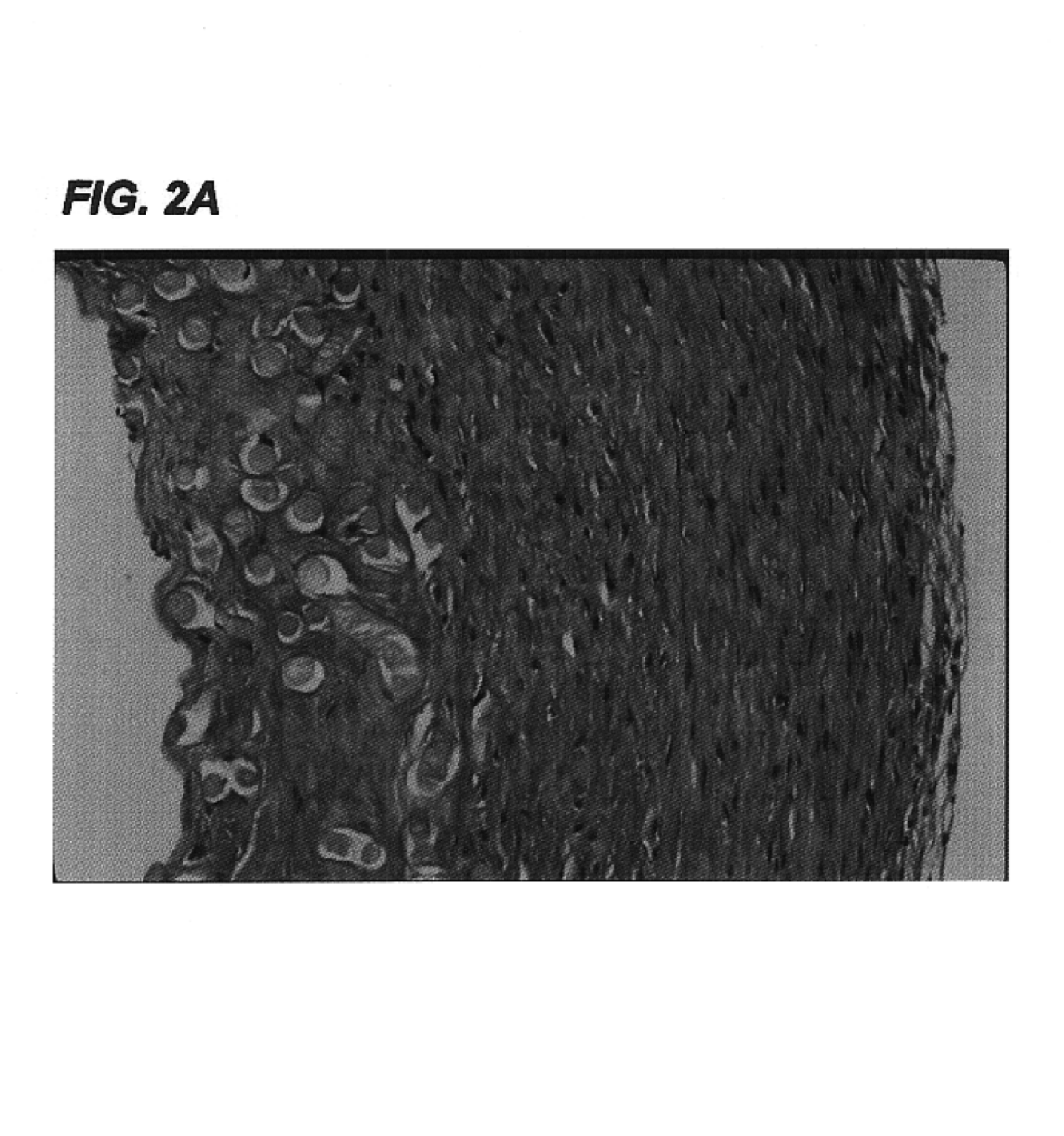Decellularized tissue engineered constructs and tissues
a technology of applied in the field of decellularized tissue engineered constructs and tissues, can solve the problems of limited number of available vessels, damage to tendons, ligaments and joints, and complex harvesting of organs, and achieve the effects of reducing immunogenicity of decellularized constructs, and reducing immune and inflammatory responses
- Summary
- Abstract
- Description
- Claims
- Application Information
AI Technical Summary
Benefits of technology
Problems solved by technology
Method used
Image
Examples
example 1
Preparation of a Primary Cell-Seeded Construct
[0104]This example describes the preparation of a tissue engineered construct suitable for decellularization, in this case a small caliber artery, using a bioreactor system. A more detailed description of many aspects of this process is found in the pending application referenced above. As an initial step, a non-woven mesh made of fine polyglycolic acid (PGA) fibers (Albany International Research Co., Mansfield, Mass.) was produced and further processed to yield a porous substrate with a hydrophilic surface. The processing enhances wettability and increases the number of cells which are deposited on the surface during seeding. Briefly, the treatment began with three successive 30 minute washes in hexane, dichloromethane, and diethyl ether followed by lyophilization overnight. The PGA mesh was then placed briefly in ethanol, removed to distilled water, and placed in a 1.0 normal solution of NaOH for 1 minute, during which the solution was...
example 2
Decellularization of a Tissue Engineered Bovine Artery Construct Using Ionic Detergent Solutions
Materials and Methods
[0109]Small caliber arteries were engineered using bovine aortic smooth muscle cells as described in Example 1. After an 8 week culture period a vessel was removed from the bioreactor, washed with PBS, and sliced into segments 2 mm thick. The slices were immersed in 50 ml of a decellularization solution containing 1 M NaCl, 25 mM EDTA, 8 mM CHAPS in sterile PBS at pH 7.2. The samples were incubated with continuous stirring for 1 hour at room temperature and were then washed three times in PBS. The samples were then placed in 50 ml of a second decellularization solution containing 1 M NaCl, 25 mM EDTA, 1.8 mM SDS in sterile PBS at pH 7.2 and incubated for 1 hour at room temperature with continuous stirring. After removal from the decellularization solution the segments were washed twice with PBS for 5 minutes to remove residual solution.
[0110]The decellularized artery ...
example 3
Decellularization of a Tissue Engineered Bovine Artery Construct Using a Nonionic Detergent Solution
Materials and Methods
[0113]Small caliber arteries were engineered using bovine aortic smooth muscle cells as described in Example 1. After an 8 week culture period a vessel was removed from the bioreactor, rinsed with PBS, and sliced into segments 2 mm thick. The slices were immersed in 50 ml of a decellularization solution containing 1% Triton X-100® (Sigma), 0.02% EDTA (Sigma), 20 μg / ml RNAse A (Sigma), and 0.2 mg / ml DNAse (Sigma) in sterile PBS without Ca2+ or Mg2+ and incubated for 24 hours in a 10% CO2 atmosphere at 37° C. with continuous stirring. After removal from the decellularization solution, the segments were washed several times with PBS to remove residual solution.
[0114]The decellularized artery and a control artery that had been produced under identical conditions but not subjected to decellularization were fixed in formalin, embedded in paraffin, sectioned, and stained...
PUM
 Login to View More
Login to View More Abstract
Description
Claims
Application Information
 Login to View More
Login to View More - R&D
- Intellectual Property
- Life Sciences
- Materials
- Tech Scout
- Unparalleled Data Quality
- Higher Quality Content
- 60% Fewer Hallucinations
Browse by: Latest US Patents, China's latest patents, Technical Efficacy Thesaurus, Application Domain, Technology Topic, Popular Technical Reports.
© 2025 PatSnap. All rights reserved.Legal|Privacy policy|Modern Slavery Act Transparency Statement|Sitemap|About US| Contact US: help@patsnap.com



